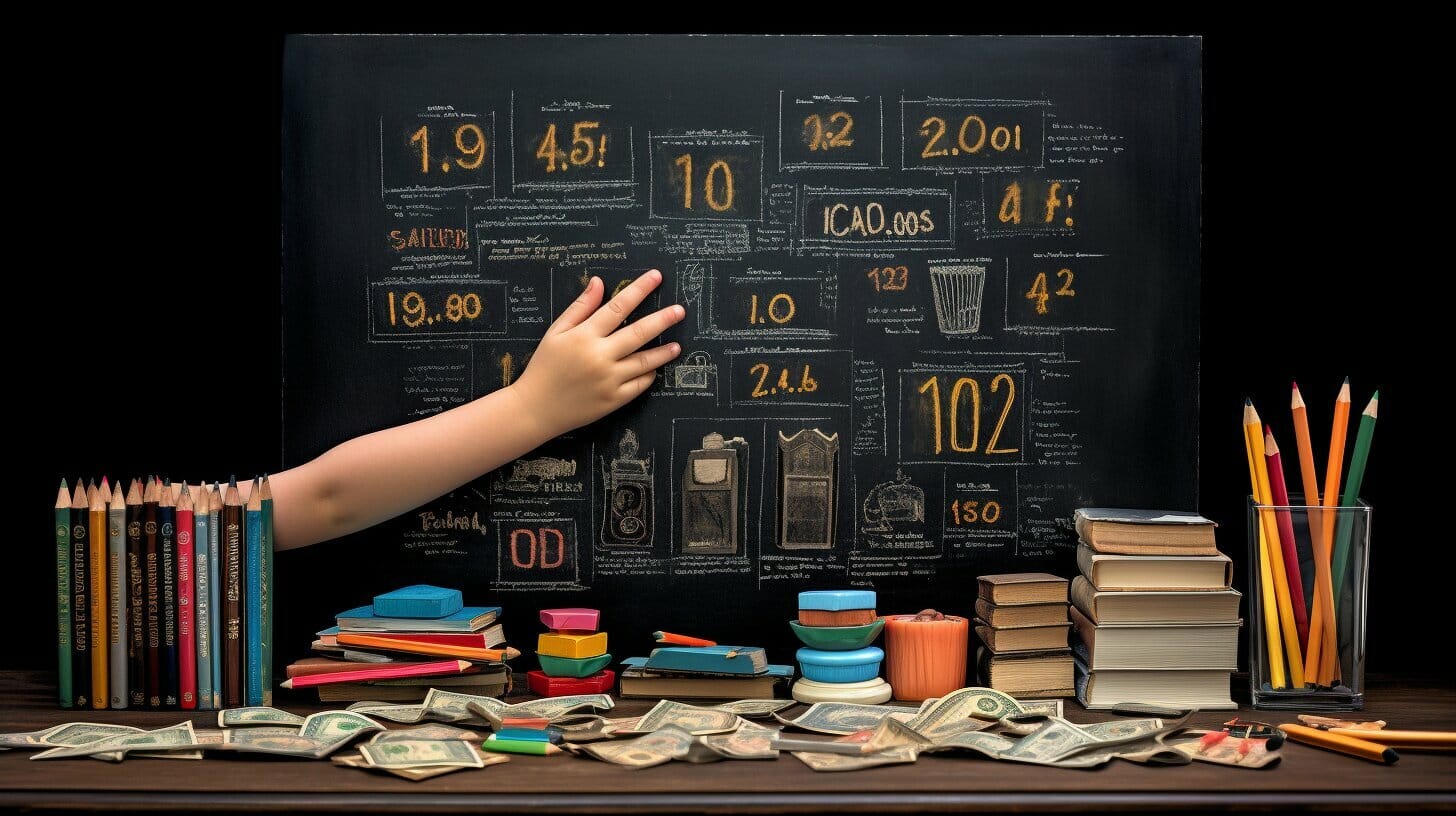Introducing children to the concept of large numbers, such as a billion, can feel overwhelming. However, with a little creativity and some simple strategies, you can make it fun and engaging for young learners.
In this section, we will explore effective methods to explain the concept of a billion to a child. We’ll discuss the importance of making numbers fun for children and provide simple explanations of place value and basic math concepts. We’ll also share engaging activities, visualizations, and real-life examples to help children understand the magnitude of this large number.
Key Takeaways:
- Making numbers fun is crucial to help children understand large numbers like a billion.
- Exploring place value and basic math concepts can lay a solid foundation for learning about large numbers.
- Visualizations and real-life examples can help children understand the magnitude of a billion.
- Simplified calculations and fascinating trivia can spark children’s curiosity and engagement.
- Engaging videos and books can serve as valuable learning resources to help children grasp the concept of a billion.
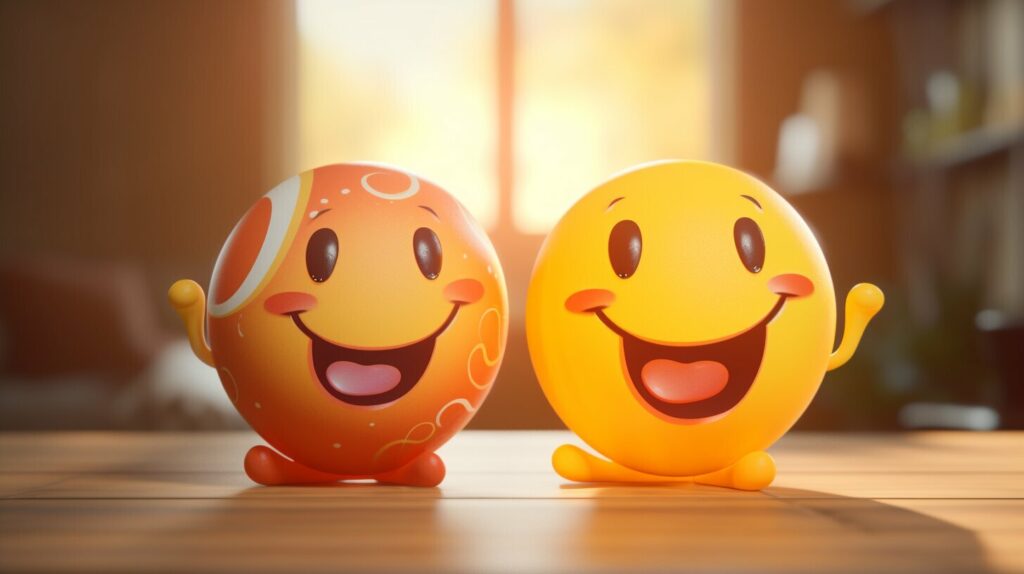
Making Numbers Fun: Introducing Counting Games
Learning about large numbers like a billion can be challenging for children, but it doesn’t have to be boring. By making numbers fun, children can develop a solid foundation in counting and expand their understanding of the concept of a billion. Here are some simple methods to teach the concept of a billion to kids:
Play Counting Games
Counting games not only provide an excellent opportunity for children to practice counting, but they can also be an engaging way to introduce the concept of large numbers like a billion. Here are some counting games to try:
| Game | Description |
|---|---|
| Counting Objects | Give your child a set of objects, such as blocks or beads, and ask them to count how many there are. Gradually increase the number of objects to help them understand larger numbers. |
| Number Hunt | Ask your child to find a certain number of objects in the room, such as 10 books or 5 toys. As they become more comfortable with counting, increase the number of objects they need to find. |
| Counting Songs | Sing counting songs with your child, such as “One, Two, Buckle My Shoe” or “Ten in the Bed.” These songs can help them learn to count and understand the concept of numbers. |
By incorporating counting games into learning, children can develop a strong foundation in counting and increase their comfort with large numbers like a billion. These fun and engaging activities can make learning about numbers more accessible and enjoyable for young learners.
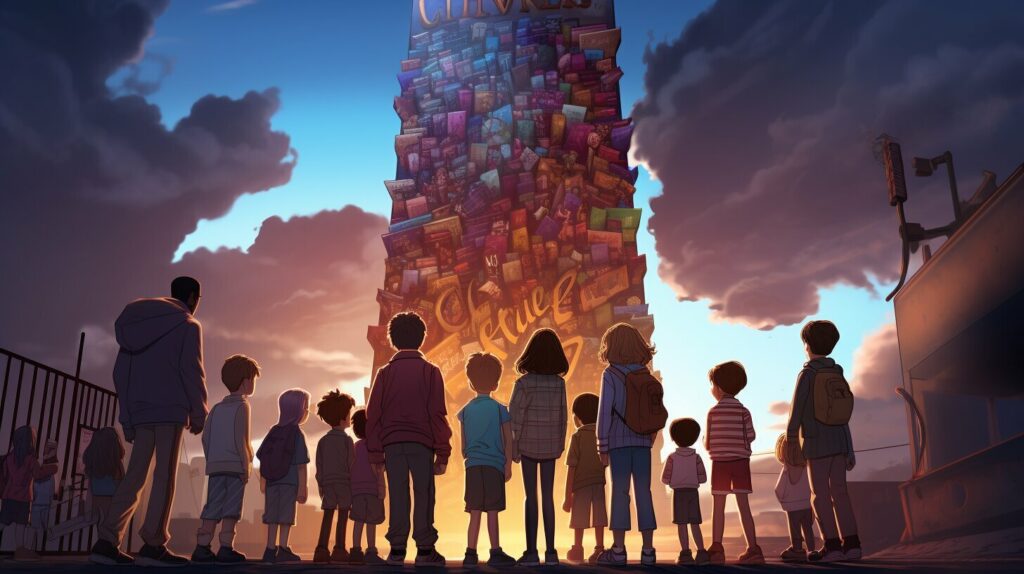
Understanding Place Value: Starting with the Basics
When it comes to explaining the concept of a billion to young learners, it’s important to start with the basics of place value. This concept forms the foundation for understanding large numbers like a billion.
So, what is place value? It refers to the value of each digit in a number, based on its position. For example, in the number 123, the “1” is in the hundreds place, the “2” is in the tens place, and the “3” is in the ones place.
Breaking down a billion into its place value components can help make the number less daunting for children. A billion is made up of 10 groups of 100 million. Each group of 100 million contains 10 groups of 10 million, and so on.
To illustrate this, we can use a table:
| Number | Place Value |
|---|---|
| 1 | Billion |
| 0 | 100 Million |
| 0 | 10 Million |
| 0 | 1 Million |
| 0 | 100,000 |
| 0 | 10,000 |
| 0 | 1,000 |
| 0 | 100 |
| 0 | 10 |
| 0 | 1 |
As you can see, a billion is a very large number with many zeros, but breaking it down into smaller groups can make it easier for children to understand.
By starting with the basics of place value, we can help young learners develop a solid foundation in counting and begin to grasp the concept of large numbers like a billion.

Visualizing a Billion: Using Everyday Objects
Understanding the concept of a billion is no easy feat, even for adults. However, by using everyday objects, we can help children visualize the magnitude of this large number. Here are some techniques that parents and teachers can use to make a billion more tangible for young learners:
Grains of Sand
Did you know that it would take about 518 truckloads of sand to make a billion grains? That’s a lot of sand! You can use this fact to help children visualize a billion by gathering a small cup of sand and counting out 100 grains. Then, have the child multiply the 100 grains by 10,000 to see how many grains are in 1 million. Finally, multiply 1 million by 1,000 to get to 1 billion. You can also show them an image of a truck filled with sand to help them understand the sheer volume of a billion grains.

Grains of sand can be a helpful tool for visualizing a billion.
Toy Blocks
Another way to represent a billion is by using toy blocks. One popular toy block brand claims that it would take over 100 million of their blocks to make a tower one billion blocks high. You can use this fact to build a tower with your child, starting with a small stack of blocks and adding more and more until you reach 100 million. Then, you can imagine how much taller the tower would be if you added another 900 million blocks!
Seconds in a Lifetime
An interesting fact to help understand a billion is that it’s roughly the number of seconds in 31.7 years! You can use this fact to connect a billion to a more relatable concept of time. Ask your child how old they are and then calculate how many seconds that is. Then, multiply that number by 31.7 to see how many seconds are in a billion.
By visualizing a billion using everyday objects, we can help children understand this large number in a more tangible way. These techniques can make math more engaging and fun for young learners and help them develop a solid foundation in counting and number sense.
Exploring Real-Life Examples: Connecting to the World
Real-life examples can help children understand the concept of a billion in a relatable way. Here are some examples:
- The population of China: China is the most populous country in the world with over 1.4 billion people. If each person in China represented one second, it would take over 44 years to count to a billion!
- The number of stars in the Milky Way: Our galaxy, the Milky Way, is estimated to have around 100 billion stars. That’s 100 times more than a billion!
- The number of grains of sand on a beach: It’s impossible to count the exact number of grains of sand on a beach, but it’s estimated to be around 7.5 quintillion. A quintillion is a million times a trillion, or a billion billion!
By using relatable examples like these, children can better understand the magnitude of a billion and appreciate its significance in the world around them.

Breaking Down the Math: Simplifying Calculations
Breaking down a billion into more understandable parts can help children make sense of this large number. Let’s break down a billion using place value and basic arithmetic.
If we think about a billion in terms of place value, we can say that it is made up of 1,000,000,000 ones. We can also break it down into smaller place values:
| Place Value | Number of Ones |
|---|---|
| Ones | 0 |
| Tens | 0 |
| Hundreds | 0 |
| Thousands | 0 |
| Millions | 1 |
| Billions | 0 |
This table shows how a billion can be broken down into place values. We can see that there are no ones, tens, hundreds, or thousands in a billion, but there is one million and no billions.
To simplify further, we can relate a billion to more familiar numbers. For example, a billion is equivalent to 1,000 times a million, or 100 times 10 million. We can also break down a billion into smaller parts, such as:
- 1000 millions, or
- 10,000 thousands, or
- 100,000 hundreds of thousands
Using these simpler numbers can help children understand the scale of a billion.
Here’s an example calculation to help demonstrate:
If you had a billion dollars and you gave each person in the United States one dollar, how much money would you have left?
First, we need to know how many people there are in the United States. Let’s say there are about 330 million people. We can’t give everyone a dollar because we don’t have enough. So, we need to divide a billion by 330 million:
Note: It’s important to emphasize to children that we are using a hypothetical scenario and not making assumptions about the value of money or any other factors.
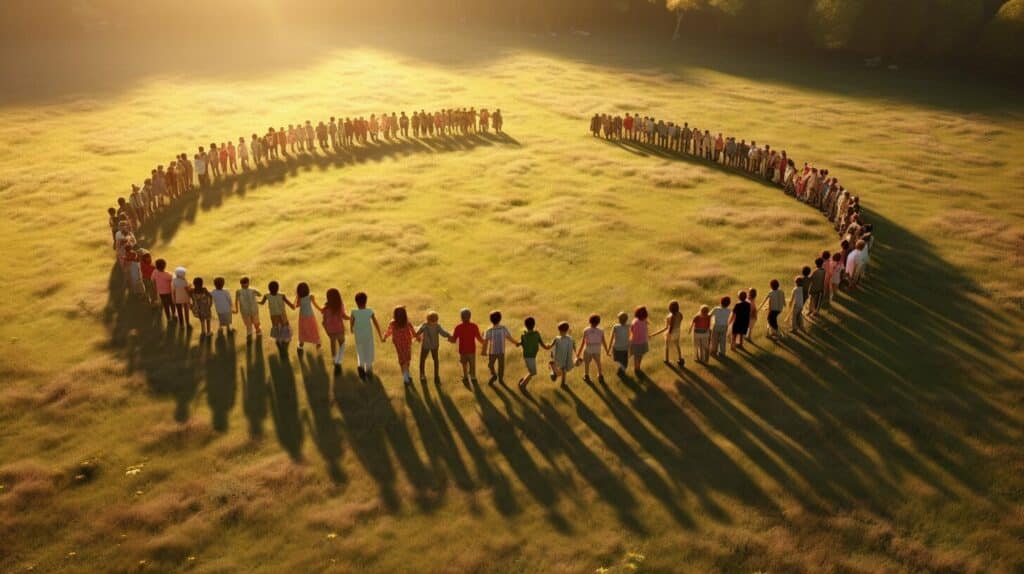
Therefore, if you had a billion dollars and you gave each person in the United States one dollar, you would have $2.03 left over.
Summary
By breaking down a billion into its place value components and relating it to more familiar numbers, we can help children understand this large number. Using simple arithmetic and relatable examples can make the concept of a billion more accessible and interesting for young learners.
Exploring Fun Facts: Fascinating Billion Trivia
If you’re looking for some interesting and fun facts about the number one billion, you’ve come to the right place! Here are some fascinating pieces of trivia that can help children understand the magnitude of this large number.
- One billion seconds ago, it was 1987!
- If you count to one billion, it would take you about 31 years!
- The earth has a mass of about 6 trillion kilograms, or six thousand billion kilograms!
- The Great Wall of China is over 13 billion feet long!
These facts can help children understand just how large a billion really is. Encourage kids to come up with their own fun facts and trivia about this number, and see how creative they can get!
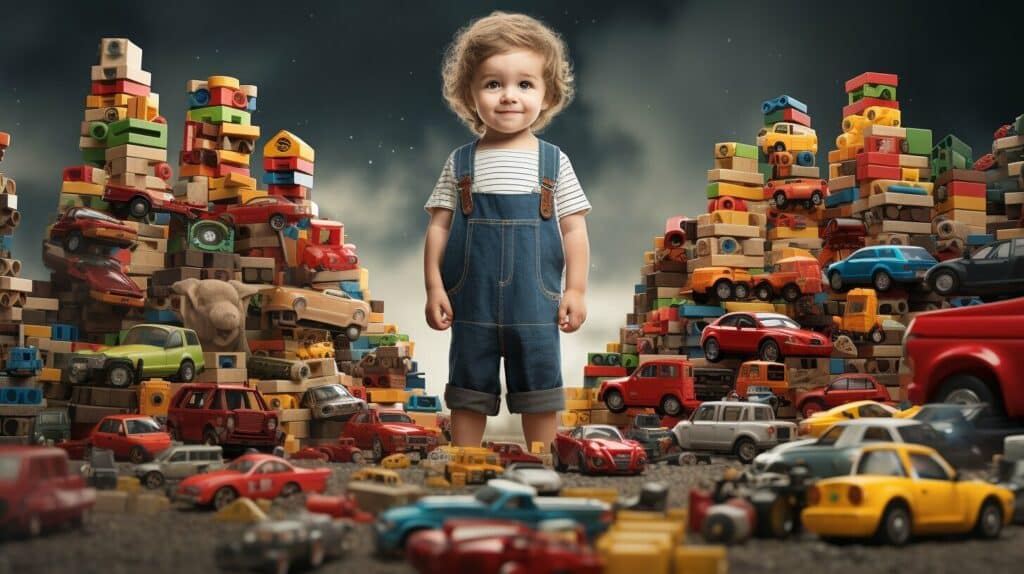
Engaging Videos and Books: Learning Resources
When it comes to teaching children about large numbers like a billion, videos and books can be valuable tools for educators and parents alike. By presenting information in an engaging and visually appealing way, these resources can make the concept of a billion more accessible and understandable for young learners. Here are some suggestions for videos and books that can help explain the concept of a billion to kids:
Videos
“How Many Zeros Are in a Billion?”
This short, animated video from TedEd is an excellent introduction to the concept of a billion. The video breaks down the number into its component parts and provides easy-to-understand visuals to help children grasp the magnitude of this large number. 
“Counting to 1,000,000 (Part 1)”
This fun and engaging video challenges children to count to 1,000,000. While it doesn’t specifically address the concept of a billion, it is a great way to help children build their counting skills and develop a sense of the scale of large numbers.
Books
| Book Title | Author | Age Range |
|---|---|---|
| “How Much is a Million?” | David M. Schwartz | 4-8 years |
| “A Million Dots” | Andrew Clements | 4-8 years |
| “The Mega-City: An Urbanization Story” | Jamie Martinez Wood | 8-12 years |
“How Much is a Million?”
This classic children’s book uses fun, colorful illustrations to help explain the concept of a million. While it doesn’t specifically address a billion, it’s a great introduction to large numbers and how they relate to everyday life.
“A Million Dots”
This visually stunning book uses illustrations of dots to help children understand the concept of a million. While it focuses on a million rather than a billion, it’s a great way to help children visualize the scale of large numbers and develop their counting skills.
“The Mega-City: An Urbanization Story”
This book uses real-world examples to help children understand the concept of urbanization and how it relates to large numbers. While it doesn’t specifically address a billion, it’s a great way to help children connect the concept of large numbers to real-world issues and events.
Conclusion
Explaining the concept of a billion may seem daunting, but with the right methods and tools, it can be made fun and accessible for young learners. By introducing counting games, visualizations, and real-life examples, we can help children understand the magnitude of this large number in a relatable way. Breaking down the math into simplified calculations and using engaging resources, such as videos and books, can further enhance their understanding.
Teaching a child about a billion requires patience and creativity, but the rewards are significant. By developing a solid foundation in counting and expanding their understanding of large numbers, children can become confident and curious learners. With these strategies, we hope you can successfully explain the concept of a billion to the young learners in your life.
Key takeaways:
- Use counting games to make numbers fun for children.
- Break down the concept of a billion into its place value components.
- Utilize everyday objects to help children visualize the magnitude of a billion.
- Explore real-life examples that can help children understand the concept of a billion in a relatable way.
- Simplify calculations and use engaging resources such as videos and books.
By implementing these strategies, you can enhance children’s understanding of the concept of a billion and help them develop a love for numbers and learning.

FAQ
How can I explain the concept of a billion to a child?
Explaining the concept of a billion to a child can be challenging, but there are simple and effective methods you can use. One approach is to break down the number into smaller, more relatable units. For example, you can explain that a billion is equal to one thousand million or one million thousands. You can also use visual aids, such as drawing or using objects to represent the magnitude of a billion. Making the concept fun and engaging through games and real-life examples can also help children understand the concept better.
What are some counting games that can help introduce the concept of a billion?
Counting games are a great way to make learning about large numbers, like a billion, fun and interactive for children. One game you can try is “Counting by Tens” where the child counts objects or movements in increments of ten, gradually building up to larger numbers. “Counting to a Billion” is another game where the child counts from one to a billion, using visual aids like stickers or tally marks to keep track. You can also incorporate technology by using interactive counting apps or online games that provide a visual representation of large numbers.
How can I help my child understand place value and break down the concept of a billion?
Understanding place value is crucial for comprehending large numbers like a billion. You can start by explaining the basic place value system, where each digit has a specific value based on its position. For example, in the number 1,234,567,890, the digit 1 represents one billion, the digit 2 represents 200 million, and so on. To further break down the concept, you can use place value charts, manipulatives like base-ten blocks or colored tiles, and real-life examples to illustrate the significance of each place value position.
How can I help my child visualize the magnitude of a billion using everyday objects?
Visualizing the magnitude of a billion can be challenging, but everyday objects can help make it more tangible for children. For example, you can use grains of sand or rice to represent each number. Start with a single grain and demonstrate how adding more grains can gradually build up to larger numbers. You can also use toy blocks to create stacks, with each block representing a specific quantity. By physically manipulating objects and seeing the accumulation, children can better grasp the concept of a billion.
Are there any real-life examples that can help children understand the concept of a billion?
Absolutely! Real-life examples can provide context and make the concept of a billion more relatable for children. For instance, you can explain that there are approximately 7.9 billion people in the world, which helps them understand the vastness of the number. You can also talk about the number of seconds in a billion years or the distance that light can travel in a billion seconds. By connecting the concept to things that children encounter in their daily lives, they can develop a better understanding of a billion.
How can I simplify the math behind a billion for my child?
Simplifying the math behind a billion can help children grasp the concept more easily. You can relate a billion to more familiar numbers by breaking it down into smaller units. For example, you can explain that a billion is equivalent to a thousand million or one million thousands. You can also demonstrate the scale of a billion through basic arithmetic, such as adding, subtracting, multiplying, and dividing. By using relatable examples and focusing on the fundamental operations, you can make the math more accessible for children.
Are there any fun facts or trivia about a billion that can engage children in learning?
Absolutely! Learning about fun facts and trivia can spark children’s curiosity and make learning about a billion more engaging. For example, you can share that if you counted from one to a billion without stopping, it would take you over 31 years! You can also discuss interesting billion-related facts like the number of grains in a billion of sand or the number of dollars in a billion-dollar bill stack. By presenting fascinating information, you can make the learning experience more enjoyable for children.
Can you recommend any videos or books that can help children understand the concept of a billion?
There are several videos and books available that can serve as valuable learning resources to help children understand the concept of a billion. For videos, you can check out educational platforms like Khan Academy or YouTube channels dedicated to math and science for kids. Some popular books that explain large numbers and concepts like a billion include “How Much Is a Million?” by David M. Schwartz and “One Grain of Rice: A Mathematical Folktale” by Demi. These resources provide age-appropriate explanations and visuals that can aid in the understanding of large numbers.

